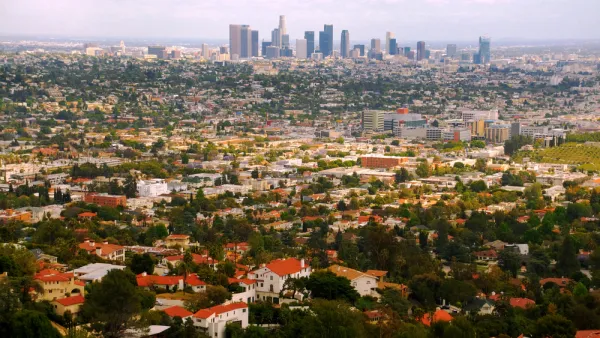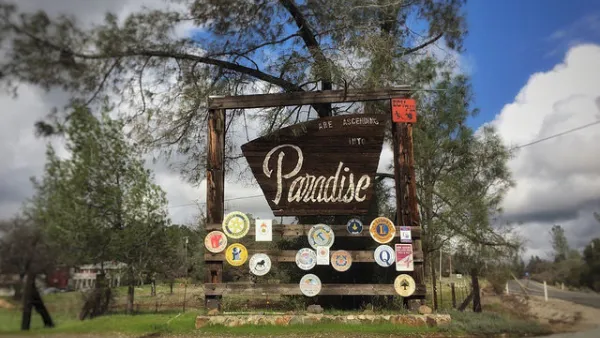Walkable, transit-accessible neighborhoods do more than just lower greenhouse gas emissions of their residents - they save them money too, states a new report, "Windfall for All", from the Bay Area's TransForm, a coalition of over 100 non-profits.
The new report seems tied to California's landmark anti-sprawl law, SB 375, that aims to reduce vehicle-miles-traveled in metropolitan areas in order to meet greenhouse reduction goals.
"The study, "Windfall For All: How Connected, Convenient Neighborhoods Can Protect Our Climate And Safeguard California's Economy," found that people in Sacramento, the Bay Area, Los Angeles and San Diego who live near public transportation on average emit fewer carbon emissions and spend billions less on transportation compared to people who live in areas where public transit is scarce."
From Sacramento Bee:
"The study... was conducted by Oakland-based TransForm, formerly the Transportation and Land Use Coalition. TransForm is a coalition that includes nonprofits, environmental advocates and labor unions.
If all residents in the four areas lived in transportation-friendly communities, the study said, they would save $31 billion per year on transportation costs and emit 34 percent less greenhouse gas.
They said the study also underscores the goals of Senate Bill 375, signed into law last year. The bill, by Sacramento Democrat Sen. Darrell Steinberg, is designed to cut greenhouse gas emissions through anti-sprawl measures, including rewarding new residential development with easy access to public transit."
Thanks to Steve Levy
FULL STORY: Study: 'Walkable neighborhoods' could save state $31M

National Parks Layoffs Will Cause Communities to Lose Billions
Thousands of essential park workers were laid off this week, just before the busy spring break season.

Retro-silient?: America’s First “Eco-burb,” The Woodlands Turns 50
A master-planned community north of Houston offers lessons on green infrastructure and resilient design, but falls short of its founder’s lofty affordability and walkability goals.

Delivering for America Plan Will Downgrade Mail Service in at Least 49.5 Percent of Zip Codes
Republican and Democrat lawmakers criticize the plan for its disproportionate negative impact on rural communities.

Test News Post 1
This is a summary

Test News Headline 46
Test for the image on the front page.

Balancing Bombs and Butterflies: How the National Guard Protects a Rare Species
The National Guard at Fort Indiantown Gap uses GIS technology and land management strategies to balance military training with conservation efforts, ensuring the survival of the rare eastern regal fritillary butterfly.
Urban Design for Planners 1: Software Tools
This six-course series explores essential urban design concepts using open source software and equips planners with the tools they need to participate fully in the urban design process.
Planning for Universal Design
Learn the tools for implementing Universal Design in planning regulations.
EMC Planning Group, Inc.
Planetizen
Planetizen
Mpact (formerly Rail~Volution)
Great Falls Development Authority, Inc.
HUDs Office of Policy Development and Research
NYU Wagner Graduate School of Public Service




























